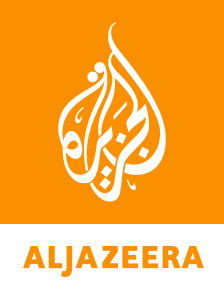ARTICLE AD BOX
In the days after gunmen killed at least 26 people in the picturesque tourist resort of Pahalgam in India-administered Kashmir last week, India and Pakistan announced a string of diplomatic moves against each other, including shutting down cross-border trade and suspending visas.
New Delhi accused Islamabad of involvement in the April 22 attack, suspended India’s participation in an Indus River water-sharing agreement that ensures Pakistan’s water supply and trimmed down diplomatic missions.
Islamabad has denied India’s accusations, called for a neutral investigation into the attack and announced it would suspend all trade with India, including through third countries, among other retaliatory measures. India-Pakistan trade relations have been frozen since 2019.
Both countries have also closed the Wagah-Attari crossing, the main land border between India and Pakistan.
But while official figures show minimal trade between the neighbouring countries, experts said billions of dollars of hidden, backdoor trading does continue.
So what is the real scale of trade between these archrivals? And will the suspension of trade and closure of the land border truly impact trading still taking place between the two countries?
Have India and Pakistan traded freely in the past?
Yes. Trade between India and Pakistan began after the two countries were created out of British India in 1947 through partition.
Trading volumes grew when New Delhi bestowed Islamabad with the “most favoured nation” (MFN) status in 1996 – a World Trade Organization rule that ensures a country treats all its trading partners equally with respect to tariffs and trade concessions.
But amid broader bilateral tensions between the nuclear armed neighbours, trade never fully took off. At least officially.
In the financial year 2017-2018, total trade between India and Pakistan stood at $2.41bn, compared with $2.27bn in 2016-2017. India exported goods worth $1.92bn to Pakistan and imported goods valued at $488.5m.
But in 2019, India revoked Pakistan’s MFN status after a suicide bombing in Pulwama in India-administered Kashmir killed at least 40 Indian paramilitary personnel.
From 2018 to 2024, bilateral trade fell from $2.41bn to $1.2bn. Pakistani exports to India plummeted from $547.5m in 2019 to just $480,000 in 2024.
How much and what do India and Pakistan officially trade now?
According to India’s Ministry of Commerce, the country’s exports to Pakistan from April 2024 to January 2025 amounted to $447.7m. Pakistan’s exports to India during the same time period were just $420,000.
India’s exports include pharmaceuticals, petroleum, plastic, rubber, organic chemicals, dyes, vegetables, spices, coffee, tea, dairy products and cereals.
Pakistan’s main exports include copper, glassware, organic chemicals, sulphur, fruits and nuts, and certain oilseeds.
Shantanu Singh, an international trade lawyer based in India, told Al Jazeera that due to the current trade ban, the immediate impact will be witnessed in Pakistan’s pharma sector: Pharmaceutical products are Islamabad’s main imports from India.
He also noted that the closure of the Wagah-Attari Integrated Check Post (ICP), which was the only land port through which trade was permitted between India and Pakistan, will increase the cost of trade.
“So typically, land ports allow for a lower cost and ease of transport, and with the closure of this land port, you would see a rise in costs of any kind of trade. It will also particularly hurt trade from Afghanistan since imports from Afghanistan utilised this land route. The local economy built around the ICP is also likely to be affected,” Singh added.
Is real trade between India and Pakistan higher?
While official figures have pegged Indian exports to Pakistan at $447.65m, the real trade volume is thought to be much higher as traders route goods via third countries to bypass restrictions, avoid scrutiny and command higher prices upon relabelling.
Unofficial Indian exports to Pakistan are in fact believed to stand at $10bn a year, according to the India-based think tank Global Trade Research Initiative (GTRI).
How does this unofficial trade work?
GTRI said this has been achieved largely by finding alternate routes through ports in Dubai in the United Aab Emirates; Colombo in Sri Lanka; and Singapore.
Explaining how the system works in a LinkedIn post, GTRI founder Ajay Srivastava said: “Indian goods are sent to Dubai, Singapore, and Colombo. The goods are then stored in bonded warehouses in transit hubs. While in storage – still duty-free – the documents and labels are changed. The products are re-exported to Pakistan under a new ‘country of origin’ – say, UAE instead of India.”
Srivastava added that while such trade is not always illegal, “this grey-zone strategy highlights how trade adapts faster than policy.”
He added that such trade, by bypassing formal trade restrictions, “fetches better prices, even after re-export markups and it maintains plausible deniability – no ‘official’ trade, yet commerce continues”.
Does this sort of trade happen elsewhere?
Yes. Foreign trade experts said rerouting goods by taking them to facilities where they are transferred to other ships to avoid international trade restrictions is a common practice.
India, for instance, has been a location for such practices since Russia’s invasion of Ukraine, said Jayati Ghosh, economics professor at the University of Massachusetts Amherst. They reroute fuel from Russia to European countries, such as Germany, to skirt sanctions, Ghosh said.
Since the Ukraine invasion, India has become one of the largest buyers of Russian crude oil, importing an average of 1.75 million barrels per day in 2023, a 140 percent increase from 2022. Russian oil accounted for about 40 percent of India’s total crude imports in 2024, up from just 2 percent in 2021.
China has been doing the same with India for decades, trade economist Biswajit Dhar said, by routing goods to India via the Association of Southeast Asian Nations, which includes Singapore, Indonesia, Thailand, Vietnam, Cambodia, Laos, Brunei, Malaysia, the Philippines and Myanmar.
“If China brings exports directly to India, they attract higher tariffs. With ASEAN, India has a retail agreement,” Dhar said. “Businesses will do everything possible to meet a demand wherever it exists in whichever country.”
Will informal trade between Pakistan and India continue?
Since the Kashmir attack, government officials in India have been collating data on indirect exports to Pakistan and are reportedly lobbying to curb the practice. Pakistan’s latest trade ban against India includes trading through third countries, which means the authorities in Pakistan are also well aware of this informal trade.
Preventing it could be tricky, however, as rerouting and relabelling goods in third countries are carried out by private entities, including importers, exporters and traders, and not through official government channels, according to Singh.
“It is really for the customs agencies in Pakistan to determine whether the relevant nonpreferential rules of origin, if any, in Pakistan are met,” Singh said.
“This is usually done through some sort of provision of proof that the importer of the product has to provide to satisfy the requirements that may be there in the law in Pakistan. So this is a question for the authorities in Pakistan to determine whether the good is actually originating in the third country or is it in fact a circumvented good which is coming from India.”
The challenge now is for customs authorities in Pakistan to determine how to tackle this circumvention through third countries, Singh said.
“That would require them, to some extent, to increase the scrutiny of the goods which are coming into Pakistan.”
Ultimately, it will be hard to prevent this trade because it meets demand. “This trade is bound to happen because [India and Pakistan] have common cultures. And there is a huge demand for Indian products in Pakistan,” he said. “That demand has to be met from somewhere.”
Traders are unlikely to want to relinquish a business that provides higher profit margins than official trade.
“This tactic [banning trade via third countries] works when we believe that the traders will act honestly and that the Indian traders will understand the message that the government of India is trying to convey by these measures,” Singh said.
“However, if the traders don’t want to do that, if they want to be unscrupulous, then there is nothing that can be stopped,” Dhar said.
Have India and Pakistan sparred over trade before?
Yes.
The 1965 Indo-Pakistani War severely disrupted trade, leading to a suspension of economic ties, but the Tashkent Agreement in 1966 restored diplomatic and economic relations, allowing trade to resume gradually.
The 1971 war resulting in the creation of Bangladesh further strained relations and trade halted during the conflict. The Simla Agreement in 1972 emphasised peaceful resolution of disputes, indirectly supporting trade normalisation. But trade ties have continued to be on a seesaw for decades.
The 2019 suicide bombing in Pulwama strained bilateral trade further. After the attack, India slapped an import duty of 200 percent on all goods from Pakistan, including fresh fruit, cement and mineral ore.
Six months later, in August 2019, India unilaterally revoked the semiautonomous status of the part of Kashmir it controls and reorganised the erstwhile state into two federally governed territories.
Pakistan, which never gave India MFN status, further downgraded diplomatic relations with India and suspended trade after New Delhi’s Kashmir moves. Since then, talks to resume trade with India have not taken place.

 5 hours ago
4
5 hours ago
4








 English (US)
English (US)